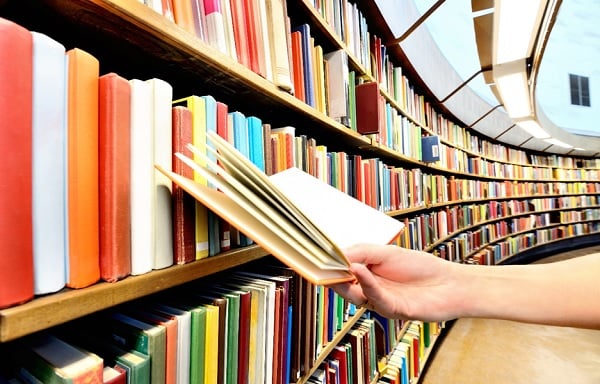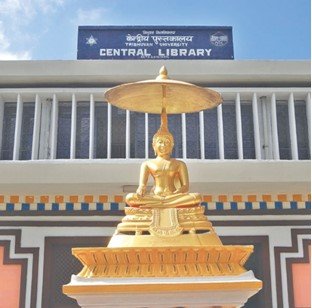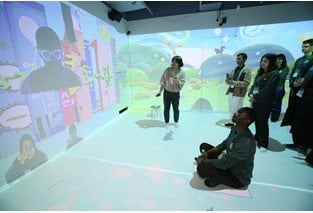Enhancing Nepal's Library System: Embracing digital innovation for global impact

What comes to your mind when you hear the word ‘Library’? A library generally refers to a quiet study place where books and many other important documents are compiled and preserved for reading. Indeed, libraries are an important source of ancient, unique, valuable, and rare documents preserved by our ancestors. They play a significant role in the documentary heritage of the people in a country. A library is not just a source of knowledge and guardian of culture but also a vibrant hub of community engagement and indicators of human development.
Libraries have been evolving along with civilization, embodying the collective wisdom, creativity, and heritage of humanity. From ancient days to the digital repositories of the 21st century, libraries have continuously evolved to meet the needs of diverse societies. The major goal of a library is to facilitate the better education system. The use of information resources, services, and facilities as are required to meet the informational, research, educational, cultural, or recreational needs of users.
The major types of libraries in Nepal are the National Library, Academic Library, Public Library, Community Library, School Library, and Special Library. The library in Durbar School (1854) was Nepal’s first school library and Tri-Chandra Campus (1918) was the first academic library. However, these libraries were offered to elite royals for a long time. The Nepal National Library (1957), managed by the Ministry of Education, Science and Technology, was the first public library in Nepal. Tribhuvan University Central Library (1959) is the largest library in Nepal with more than 4 million collections.

The majority of the libraries in Nepal are either located in Kathmandu Valley or a certain part of a city. Nepal has one of the lowest numbers of public libraries per unit in the world. Nearly 30 million people live under the shadow of inconvenient or no access to schools and public libraries. Also, there is a Library and Information Policy (2007) but no proper implementation to regulate and fund the libraries in the nation due to the lack of distinct Library Law.
Many countries around the world have implemented library policies to promote the development and sustainability of libraries as essential cultural, educational, and community institutions. The United States, the United Kingdom, the majority of European countries, South Africa, India, Japan, South Korea, etc., have all taken steps in this direction.
For Nepal to achieve economic prosperity in today's highly competitive, knowledge-driven global economy without substantially improving the quality of human capital through enhancements in literacy and education standards, it could look to South Korea as a prime example. In the 1960s, South Korea was recovering from the war and was among the least developed nations.
However, the country underwent a remarkable transformation by implementing a focused program to enhance literacy and education quality. Central to this transformation was the establishment of well-equipped and efficiently managed public libraries. In 1945, South Korea had a literacy rate of 22% and a per capita GDP of $94 in 1961. By 2024, its literacy rate soared to 99%, and its GDP per capita exceeded $34,000.
On February 26, 2024, an event themed "The Future of World Library" by G 30 K-Library and Naiel Newspaper was held at the National Library for Children and Adults, Seoul, South Korea. This program aimed to help understand the education and library system of South Korea as well as various parts of the world. A total of 30 representative international students, including one Nepalese student, participated in the program and shared experiences about libraries from their respective countries.

The National Library for Children and Adults is a representative modern library. This place has a mixed vibe of a school kindergarten, a game zone, and a research center. This kind of environment motivates both young and adult audiences to learn directly by participating through games, animation, drawing, virtual reality, etc. for free. This visit brought insights that libraries are more than just books and study places. In today’s era of science and technology, libraries have become a core place that provides convenient and equitable access to useful resources for local citizens and people all around the world.
Libraries are essential institutions for advancing knowledge, education, and culture. However, in the digital age, libraries face new challenges and opportunities to meet the diverse and evolving needs of their users.
Digitalization, reinvention, and new methodologies enhance the value and accessibility of libraries for different age groups with different needs and preferences. Accessibility means that users can access information and services in ways that suit their abilities, circumstances, and goals. Accessibility is especially important for users who face digital exclusion due to factors such as a lack of digital service, devices, or connectivity. Libraries can address these issues by providing digital access and skills support, such as free computer use, Wi-Fi, and one-to-one assistance.
In Nepal, several measures can be taken to enhance the library system:
- Establishment of new libraries to increase access to information and resources across the country.
- Digitalization of library services to modernize operations and improve accessibility to digital resources.
- Implementation of open access policies, making library services free of charge to ensure equitable access for all.
- Promotion of inclusivity by making libraries children and disabled-people friendly, catering to the diverse needs of users.
- Creation of interactive learning environments within libraries, incorporating games, puzzles, quizzes, and other engaging activities to foster learning and participation.

Libraries worldwide are leveraging digital innovation to meet the demands of the digital age. By embracing various digital technologies and platforms, Nepalese libraries can offer digital, open, and entertaining services, benefiting both children and adults.
This approach not only expands access to information but also enhances the learning experience, empowering individuals to participate more actively in the knowledge society. Ultimately, these efforts can propel Nepalese children forward on the global stage.


Leave Comment